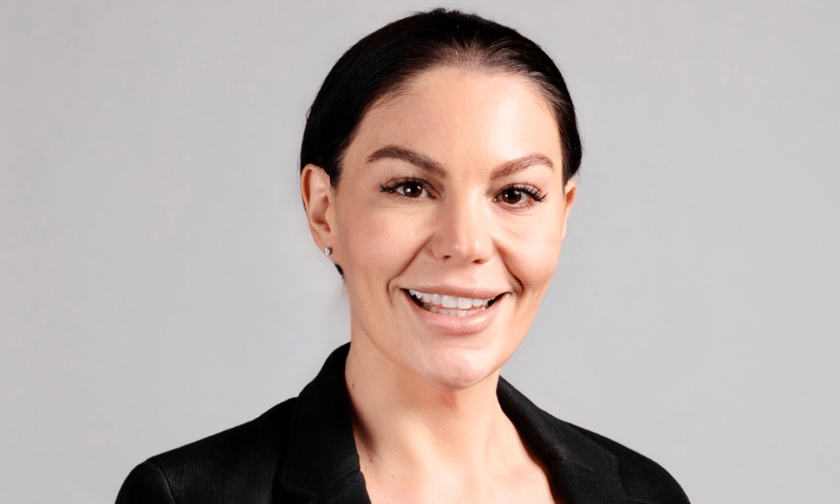

By
Perth borrowers are more proactively asking how they can afford both a house and a family as home prices rise, with brokers having “hard conversations” about whether they can do both at once.
Bianca Patterson (pictured above), director at Calculated Lending, said she had noticed a real shift over the past year with borrowers asking her about how they would be able to afford the cost of a family and mortgage.
“There is more awareness of the current costs of living, and I often get questions about how we see other families manage it, what they should aim to have saved based on their incomes, et cetera,” Patterson said.
The pressure on borrowers comes during a boom market in Perth – the city’s property prices have risen 76% since March 2020, according to CoreLogic data, and 22.6% in the year to 31 October 2024.
Patterson said that, for the first time in a long time, buyers in the Perth market were being priced out of areas where they had assumed they would buy and raise their families.
“Due to this, they come to us looking for their maximum borrowing capacity to see if there is any way they can stretch their budgets and capacities to get into the area and property type they want,” she said.
“We have many hard conversations with clients about how borrowing to their maximum and using all of their savings now will likely mean they need to put back their plans to start a family.”
Maxing out on borrowing can make it almost impossible for some to take unpaid leave, she said, and require both income earners to return to work full time within a few months of the baby’s arrival.
“Then they will need to struggle with the juggle of a mortgage and childcare. For most it is a conscious decision they need to make – do they want the dream house, or a family, as often both are not possible at the same time in their lives.”
Australia’s fertility rate fell in 2023 to a record low of 1.5 babies per woman, below the 2.1 replacement rate required to sustain a population without any immigration boost.
The Centre for Population has suggested that the cost of housing, which includes mortgages and rents, is one of the barriers standing in the way of people starting new and bigger families.
Patterson always asks borrowers if they are currently planning a family – or even considering one in the distant future – to ensure they are not overextending themselves on their mortgage.
The brokerage wants borrowers to have access to appropriate product features, such as multiple offset accounts, redraw facilities that can reduce minimum repayments if utilised, or repayment holidays.
“This is so they can start building up savings buffers to cover any unpaid or reduced pay leave periods when the time comes, and have options to reduce repayments while their cashflow is tighter.”
Patterson said childcare and school fees had a significant effect on borrowing capacities, as they were mid-term to long-term costs that reduced the net income that could be used to service a loan.
Though childcare may only last five years, and school fees 12 years, lenders typically assess borrowing capacity for a 30-year loan assuming these will be ongoing costs for the whole loan term, she said.
“Some lenders have recently adopted a more commonsense approach to exclude these costs from their calculations if we can evidence the fees are paid by a family member, like a grandparent, or that enough savings will be held after settlement of the loan to pay for the remaining schooling life for each child,” Patterson said.
Depending on the total household income of the parents, Patterson said the business often saw one parent choosing not to return to work until the youngest child starts school, which can be a lower-cost option for the family once childcare and Government family benefits are considered.
“While this is a solution they opt for, it can affect their borrowing capacity for that period, as not all lenders treat Centrelink benefits in the same way they do employment income,” she said.
Calculated Lending works with clients aged 18 to 80, and Patterson has noticed distinct differences between age brackets when it comes to average borrowing strategies and tolerance for debt.
More mature demographics typically started with smaller homes in areas further out from the city and paid them off over time, upgrading when their budgets and family situations allowed, she said.
“Societal changes and social media’s impact on the need for instant gratification has a lot of our younger clients looking to move into similar suburbs and houses to what they spent their teenage years living.”
This would see them essentially “skipping the first smaller cheaper home”, and instead wanting their first home to be “what their parents may have taken 15 plus years to work up to”.
“While cost of living is a concern, there has been a shift of people's priorities over the last decade. The cost of living may be limiting the size of families, ultimately people are opting to choose careers, travel, and nice homes over the responsibilities and costs of raising children,” Patterson said.
